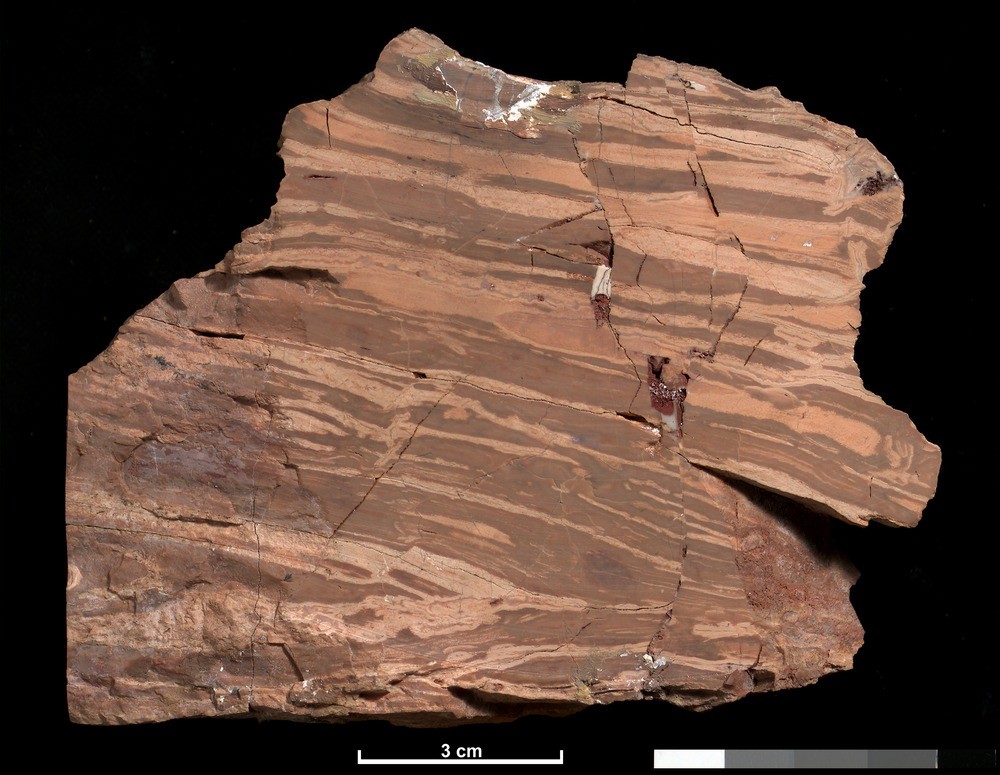| P number: | P521352 |
|---|---|
| Caption: | Rock specimen of rhyolitic lava. Castlelaw Hill, Pentland Hills, Edinburgh, Scotland. |
| Description: | The sample is a striking banded volcanic rock with a striped appearance due to thin layers of varying composition. The pale colour is due to the relatively 'acid' composition of the lava. Note that some of the bands towards the upper part of the image show displacement due to the presence of a series of small faults in the sample. British Geological Survey Petrology Collection sample number EMC2428. Rhyolite is the term given to fine-grained glassy volcanic rocks of 'acid' composition, i.e. those which are rich in silica and alkali elements. It is the fine-grained equivalent of a granite. Rhyolite magmas are known to be particularly viscous, and the 'sticky' nature of the molten material makes rhyolitic volcanism very explosive and dangerous. Glassy rhyolites are sometimes termed obsidian or pitchstone. The rhyolite found on Castlelaw Hill is of Lower Old Red Sandstone (Devonian) age and is one of ten distinct lava groups that can be found in the Pentland Hills. The lavas of the Pentlands are themselves part of a widespread calc-alkaline igneous province that extended throughout Scotland and Northern Ireland. The upland areas of the Sidlaw, Carrick and Ochil hills are all formed from volcanic rocks of the same age as those of the Pentlands. |
| Date taken: | Sun Dec 01 00:00:00 GMT 2002 |
| Photographer: | McTaggart, F.I. |
| Associate: | T.S. Bain |
| Copyright statement: | NERC |
| Additional information: | EMC2428 |
| Orientation: | Landscape |
| Size: | 196.13 KB; 1000 x 775 pixels; 85 x 66 mm (print at 300 DPI); 265 x 205 mm (screen at 96 DPI); |
| Average Rating: | Not yet rated |
| Categories: | Best of BGS Images/ Geological structures |
Reviews
There is currently no feedback

